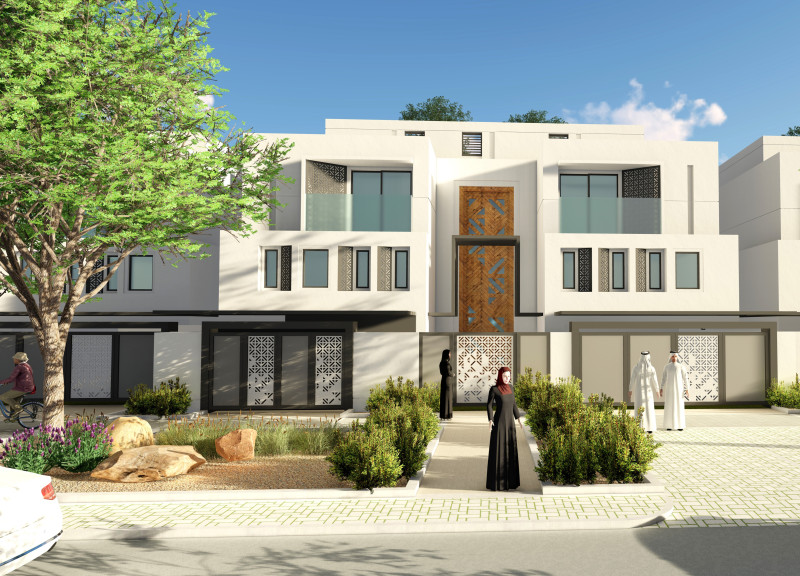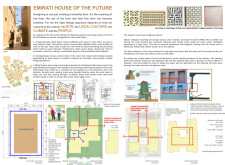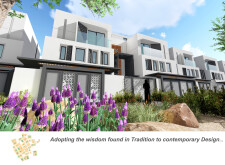5 key facts about this project
# Analytical Report: Emirati House of the Future
## Overview
The Emirati House of the Future is situated in a high-density urban environment, where it serves to bridge traditional Emirati cultural values with contemporary architectural solutions. The design is rooted in an understanding of the local climate, cultural norms, and social dynamics, offering a residential setup that is both functional and reflective of the region's heritage.
## Cultural Integration and Spatial Strategy
The architecture incorporates key characteristics of Emirati design, emphasizing privacy and community through efficient spatial organization. Central to the layout are courtyards, which facilitate family gatherings and outdoor activities while serving as a functional climate moderation feature through natural ventilation. Traditional elements, such as wind towers, are engineered to function as passive cooling systems, effectively reducing reliance on mechanical air conditioning. Perforated privacy screens enhance resident comfort by allowing light and airflow, while also echoing the intricate motifs found in traditional Emirati textiles.
## Materiality and Sustainability
The project employs a diverse range of materials that highlight both modern construction techniques and traditional craftsmanship. Concrete provides structural integrity, while wood is used for decorative elements that showcase artisanal skills. Expansive glass facades are integrated to maximize natural light and blur the boundaries between indoor and outdoor spaces. Ceramic tiles are used for their thermal regulation properties. The landscaping features native plants, which require minimal maintenance and enrich the environment, incorporating elements such as fruit trees and herbal shrubs that support sustainable living practices.
The house’s orientation and high ceilings are tailored to optimize thermal comfort while addressing climatic challenges. This commitment to sustainable design principles is further reflected in the incorporation of smart home technologies, enhancing energy efficiency and contributing to a modern living experience that respects and preserves cultural identity.





















































